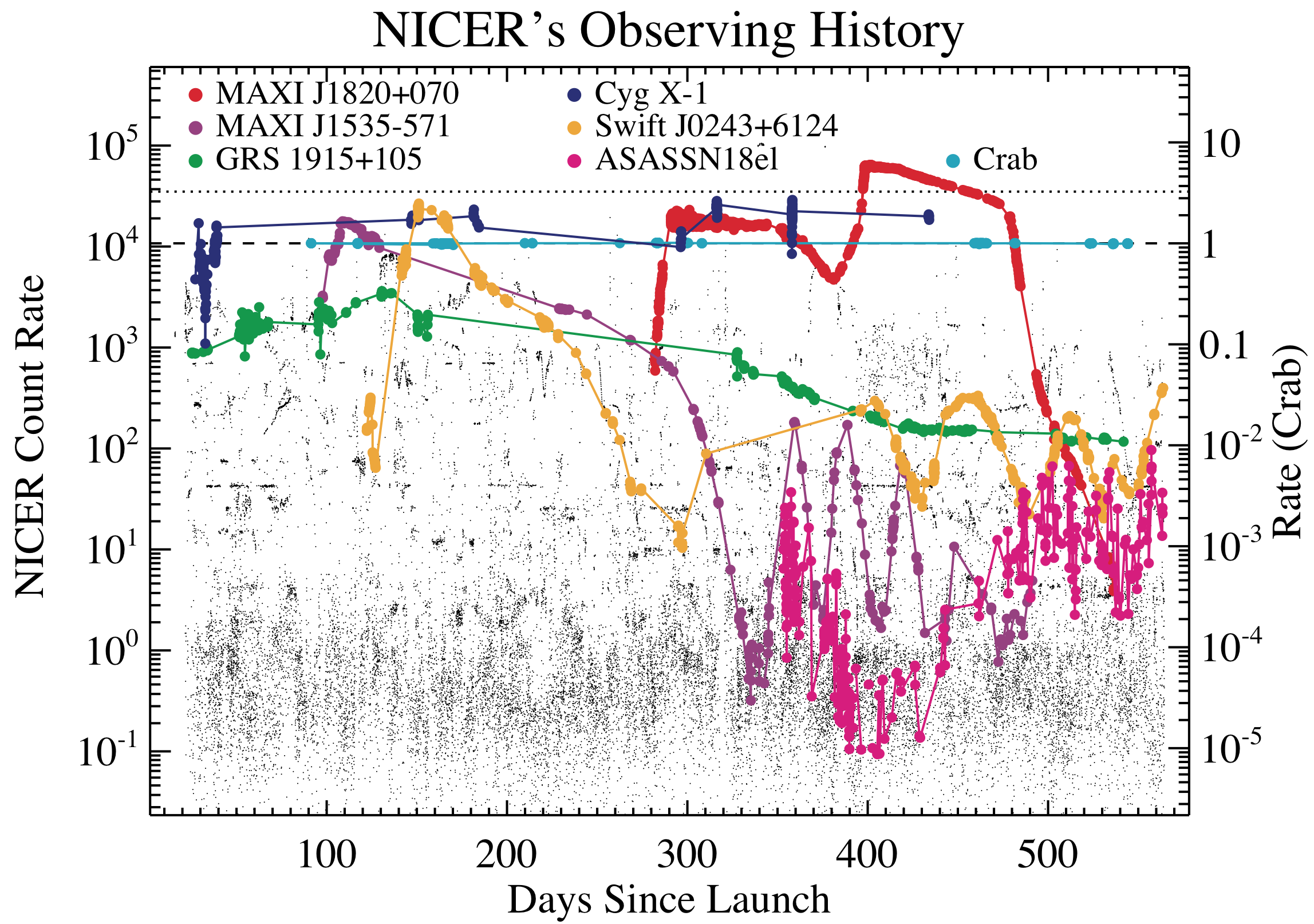NICER / ISS Science Nugget for January 3, 2019NICER's data archive demonstrates its wide dynamic rangeShown in the figure are the aggregate science data accumulated by NICER over 17 months of operations. Each individual observation, marked by a point, indicates the NICER X-ray count-rate at the time of observation. Accordingly, the saturation of a given patch in the diagram reflects the density of NICER's monitoring sources of a given brightness over time. It can be readily seen that most of NICER's time is devoted to studying faint sources. Predominantly, this reflects observations of pulsar systems to determine the interior structure of neutron stars (the "equation of state" of super-dense matter). However, during NICER's time on ISS so far, a variety of extremely bright "X-ray transient" sources were also pursued and monitored closely by NICER. These are binary systems consisting of a normal star paired with a black hole or a neutron star, and which undergo outbursts (typically, roughly year-long in duration), and reaching brightnesses equivalent to nearly a million suns. Colored tracks in the figure trace the time evolution of several of these prominent transient sources, as well as several persistently active X-ray emitters in our Galaxy. This diagram is illustrative of NICER's powerful dynamic range of roughly a million-fold, across which NICER provides high throughput X-ray variability and spectroscopy data, responding to a wealth of sources in the X-ray sky.
The black-hole binary MAXI J1820+070, in red, was so bright that approximately half of NICER's detectors were intentionally disabled near its peak brightness to avoid saturating the data telemetry to ground (this limit is indicated by a dotted line). The "standard candle" (an object of known and stable brightness) in the X-ray sky is the Crab Nebula, shown as a light-blue horizontal track. Other tracks highlighted include another bright black-hole X-ray transient, MAXI J1535-571 (purple), which exhibited a primary outburst starting in September 2017 and lasting several months; after its initial decline it showed several weak after-bursts. Two bright and persistent black hole systems, GRS 1915+105 (green) and Cyg X-1 (blue), are among the most well-known and prominent black-hole systems in our Galaxy; each ranks among the brightest objects in the X-ray sky and each has been observed more than a dozen times with NICER. In gold is the remarkable neutron star system Swift J0243+6124, which is the first known "ultra-luminous X-ray source (ULX)" in our Galaxy. A mysterious transient system whose precise physical mechanism in unknown, ASASSN-18el, is shown in magenta. What we do know is that ASASSN-18el occurred far outside our Galaxy at a distance of approximately 70 megaparsecs, with a corresponding peak luminosity of ~1044 erg/s, more than 10 billion times the brightness of the Sun. One contender explanation is that it may be a "tidally disrupted" star being devoured by a supermassive black hole. NICER
|



